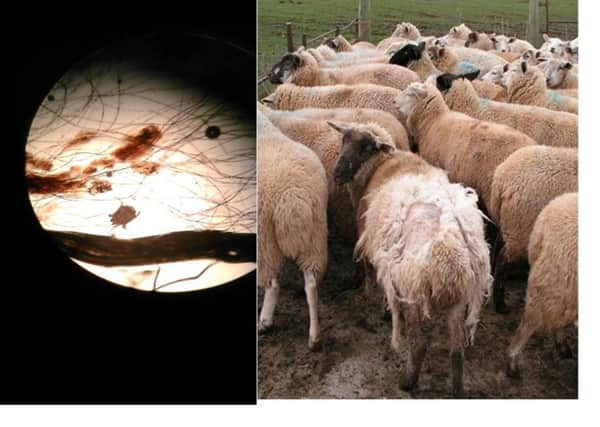Collaboration could be key to sheep scab control


This is caused by a mite that lives on the skin and creates intense irritation. At this time of year, when the fleece is long, it provides the ideal place for the mite to live.
Sheep scab often leads to wool loss and sores.
The tiny mite is too small to be seen by the naked eye, but spreads easily from sheep to sheep. It can even survive off sheep in the surroundings for up to 17 days.
Advertisement
Hide AdAdvertisement
Hide AdOne way to confirm the flock is affected is to take a scraping from the skin around an affected area in an attempt to find the mite by looking under a microscope. Another approach is to blood sample the sheep to look for evidence of an antibody reaction.
It is difficult to tell the difference between lice and sheep scab mites simply by examining the sheep. Lice can similarly cause a loss of wool. These diseases require different treatments so getting a diagnosis is crucial to save time and money from treating the wrong disease.
There are several options for treating sheep scab. The main thing is to treat the entire flock at the same time.
Dipping with a product containing Diazinon is one method. There are health and safety implications of treating sheep this way, but it does provide protection for up to four weeks from re-infection.
Advertisement
Hide AdAdvertisement
Hide AdAnother option is the use of a long acting injection, such as Cydectin LA, which protects for 60 days. The third option is to use shorter acting injections, but these may need to be repeated.
All of these will kill the mite, but preventing re-infection is crucial.
One of the key points is co-ordinating treatment with neighbouring farms. Vets often organise meetings to try to ensure the treatments used will be as effective as possible.
Hopefully by collaborating together outbreaks can be treated quickly and successfully.